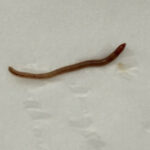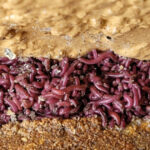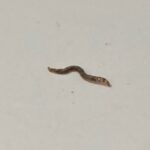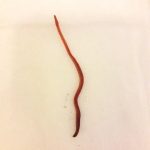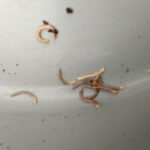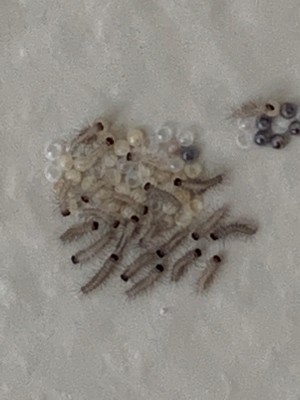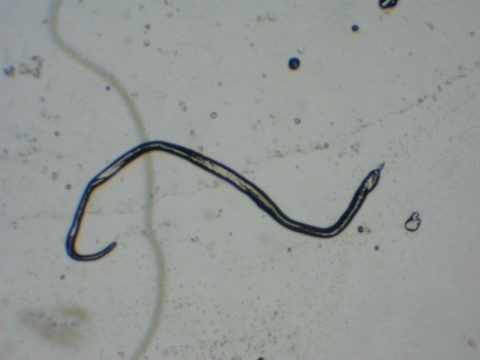
“This was found in our toilet bowl on its own”, writes this reader about the red-striped worm pictured below. “Do you know if it’s a parasite? Thank you for your website. It’s a really useful website and very informative. Thanks!” To that we want to thank our reader for the compliment, and for coming to us to have this worm identified. And with that in mind, we think our reader has found herself a tiger worm, albeit a mangled one. Like most worm species, tiger worms typically have a uniform shape to their bodies, and we can see how this worm’s body is very irregular. How we were able to tell that this is a tiger worm is by the parts of its body that are still intact. The stripes, coloration, and shape of those parts indicate that this is a tiger worm.
Tiger worms are not parasites, so our reader needs not worry about that. Of course, if our reader has other reasons to suspect that it is a parasite, then she should disregard our identification and instead seek the advice of a medical parasitologist. Since we are not medical professionals, we are neither qualified nor legally able to identify parasites. But, assuming that our reader asks only because it was found in the toilet, we would say this is definitely a tiger worm. It is not uncommon to find worm’s in one’s toilet, unfortunately, but that also means that not every worm found in a toilet is automatically a parasite.
Also referred to simply as redworms, trout worms, manure worms, or by their scientific name, Eisenia fetida, tiger worms are a species of earthworm. That means they feed on decomposing organic materials in the soil, which they return to the earth as nutrient-rich waste via ingestion and digestion. They play a vital role in the ecosystem, and tiger worms specifically are a common purchase for vermicomposters (people who use worms in their compost to process the organic waste). Since earthworms live underground, they sometimes end up in people’s piping through leaks in the pipes. If the leak is sizable enough, the residents who get their water from these pipes will be able to notice signs: discolored water, foul-smelling or -tasting water, or inconsistent water pressure and/or temperature. If our reader notices any of these signs, she may want to contact a professional. Otherwise, this worm could have come from long away, and simply moving the worm outside should suffice in dealing with the issue.
To conclude, the worm our reader found in her toilet is a tiger worm. They are not parasitic, and not dangerous at all. In fact, they are friends of the environment. We hope this helps, and we wish our reader the very best!
All About Worms is always free, always reader-supported. Your tips via CashApp, Venmo, or Paypal are appreciated! Receipts will come from ISIPP Publishing.
You might also find these guys interesting!





